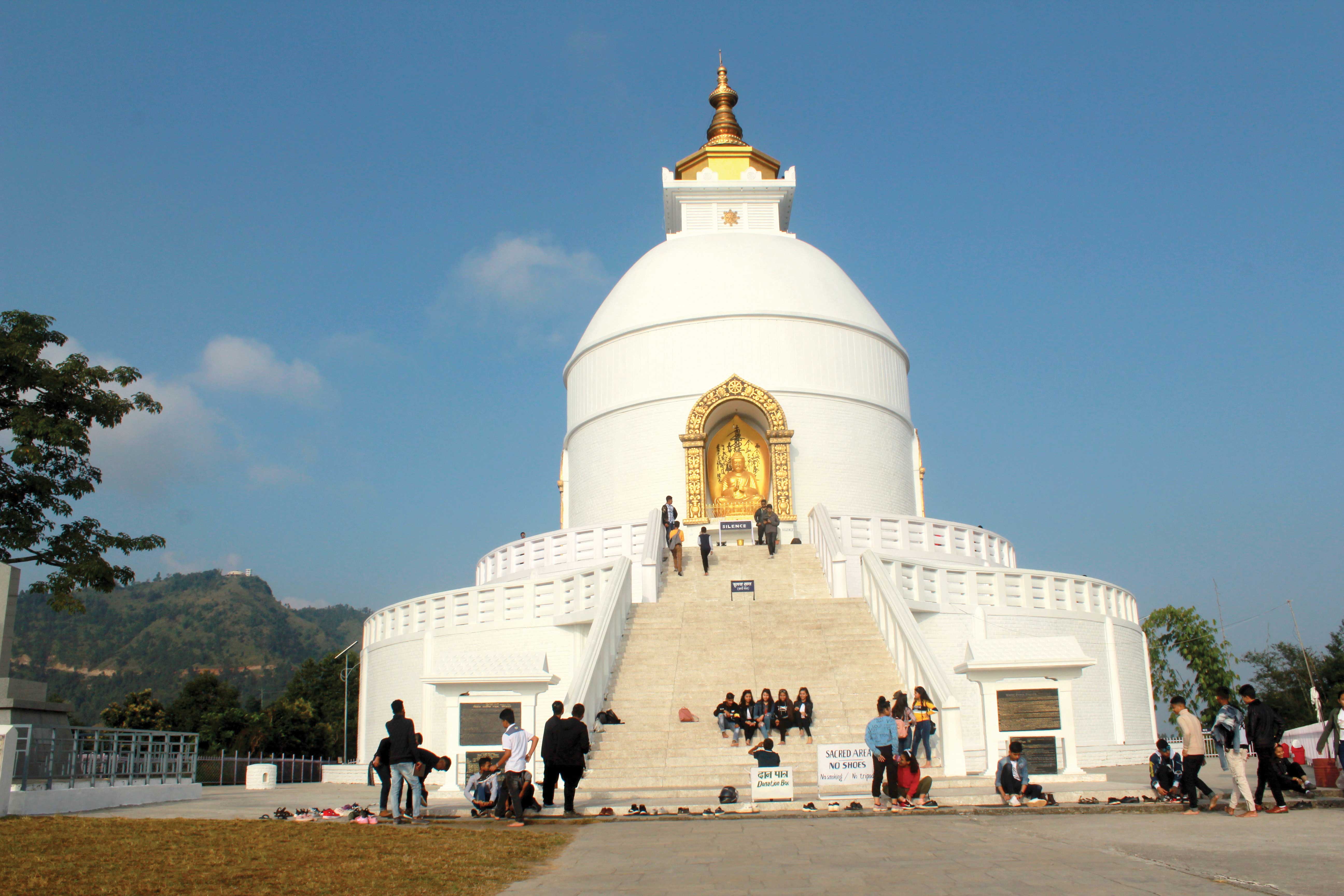At the Sheshnarayan temple, near the medieval town of Pharping, under a cliff face are the revered sites of two different yet intertwined faiths; yet another example of the co-existence of numerous religions in Nepal. Directly above the Sheshnarayan Temple is a cluster of stalactites, resembling a cow’s udder. Milk is said to have flowed down onto the temple from them once. On the same cliff face is a naturally embossed image of a serpent.
 The Sheshnarayan Temple shares its boundary with the Rigzin Drubte Ghatshal Monastery, the oldest monastery in Pharping. On the monastery’s southern wall is a tiny door that leads into a small cave, big enough for a single person to sit up in. On it’s low roof is a gold colored hole. Padmashambhava, the great rover and stalwart of Tibetan Buddhism, is believed to have created that depression with his head when he sat there in meditation for seven years, seven months and seven days. And, on a plaque commemorating the renovation of the site in 2017 B.S. by king Mahendra, the titles prefixed to his name run for seven lines.
The Sheshnarayan Temple shares its boundary with the Rigzin Drubte Ghatshal Monastery, the oldest monastery in Pharping. On the monastery’s southern wall is a tiny door that leads into a small cave, big enough for a single person to sit up in. On it’s low roof is a gold colored hole. Padmashambhava, the great rover and stalwart of Tibetan Buddhism, is believed to have created that depression with his head when he sat there in meditation for seven years, seven months and seven days. And, on a plaque commemorating the renovation of the site in 2017 B.S. by king Mahendra, the titles prefixed to his name run for seven lines.
Below the temple are five small ponds. The largest, called Basuki Kunda, is a light blue pool with the clearest water anywhere in the Valley. Slender wooden poles are piled on the pond floor. They are the result of a rite observed during an annual festival, which the local community has celebrated for ages. Local lore has it that when the priest who used to look after the temple became too frail to be able to fetch water from the Bagmati to perform the daily rituals, the gods created a spring. But the volume and current of the water flowing from the spring was so great that the priest could not cross over to the temple. A pair of nagas came to his rescue, stretching themselves across the water to form a bridge. Locals throw poles into the pond every year in tribute to that altruistic serpent couple. Only trees that are forked at the base, which symbolizes the union of the husband and wife, are used for this ceremony. Water from this pond flows into the other four kundas: Gosaink, Bhairav, Surya, and Saraswoti.
The temple is one of four Narayan temples in the Valley. The other three are Icchangu Narayan, Bishanku Narayan and Changu Narayan. The Licchavi king Vishnugupta is believed to have built them, placing them on the highest hills in the four cardinal directions to guard the Valley. North of the pools is a temple without a roof housing a simple stone; the latter is believed to be from Narbada in India and is worshipped as Narbadeshwor. The roofless design is apparently to allow access to the deity’s apparently daily nocturnal visits to the temple, all the way from India.
It’s hard to tell one thing from another at the Sheshnarayan Temple area—myth from history, lore from belief, geographical features from miraculous formations. Here, when the fragrance from incense sticks burning in the monastery sweetens the air in the temple, you forget about differences anyways.











